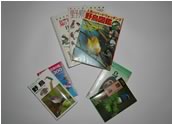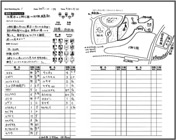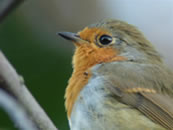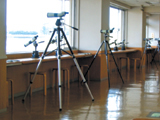Japanese | English
Japan Telescope Manufactures Association
Welcome to the bird-watching world
Japan Telescope Manufacturers Association
• Wild bird picture book
 The pleasantness of bird-watching is finding birds, finding out what bird it is and observing it closer when you meet it again. There are two kinds of wild bird picture books. One is a large-sized at-home book. The other is a portable one called a field guide for outside use. Moreover, there are books for beginners with illustrations and pictures explaining basic birds, and cram-full ones for the intermediate and experienced. Please look for the most suitable one for you.
The pleasantness of bird-watching is finding birds, finding out what bird it is and observing it closer when you meet it again. There are two kinds of wild bird picture books. One is a large-sized at-home book. The other is a portable one called a field guide for outside use. Moreover, there are books for beginners with illustrations and pictures explaining basic birds, and cram-full ones for the intermediate and experienced. Please look for the most suitable one for you.
• Field note taking
Field note taking is for remembering when, where and what birds you meet. It will be your own data for bird-watching. It will be your memorial. Also, you can understand which place you often go and which season you meet the birds.(Sample : Birder editorial desk)

- [Points for notebook choosing]
- Portable one which you can carry in your pocket.
- The cover is hard and you can write outside easily.
- Thin rule lines or no line would be preferable.
- Same sized notebooks are preferable to organize.
- [Points for recording]
- Write in the place, date, time, weather, environment (waterfront, rural mountain, hill etc.) names of the birds.
- You can enhance your joy if you write in some comments of the day after you get home.
- The short cut is to ask the experts to show you their notebooks.
• Binoculars
 Birds have such strong guard that if approached only a little, it makes them go away. Binoculars are requisite not only for looking them in a big size but observing them at a point distant from cautious birds.
Birds have such strong guard that if approached only a little, it makes them go away. Binoculars are requisite not only for looking them in a big size but observing them at a point distant from cautious birds.
For example, binoculars of 8 magnifications make the birds which are at the point of 80m far away from you as if they were 10m away from you. You can clearly see the shape and color of the wing. Binoculars which offer you a lighter image (wide aperture), you can see the birds clearly even though they are in a dark place.
There are three types of binoculars, small, medium and large, so please choose suitable ones for you and consult with experts or staff of a specialized store.

left side : small center : medium right side : large

‹ Body strap ›
 When you dangle binoculars from your neck you cannot walk well because your neck will get unexpectedly tired. The body strap of the picture is wide and very convenient to support binoculars with your whole body.
When you dangle binoculars from your neck you cannot walk well because your neck will get unexpectedly tired. The body strap of the picture is wide and very convenient to support binoculars with your whole body.
‹ The principle to choose binoculars ›
There are many kinds of binoculars, big or small, high or low of power. First of all you should choose ones which suit your body in size and weight.
Another point is to choose binoculars to fill your purpose. If you'd like to watch birds along the way as you walk in the mountains, we recommend you as use as light and compact ones as possible. (Please decide the budget and buy them after consulting at a specialized store and so on.)
‹ About magnification ratio and aperture ›
Some think the higher the magnification is the better, but when the magnification is too high, be careful of your hands jiggling and narrowing your horizon. At first, we recommend binoculars of 7~10 magnifications.
Aperture more than 30mm would be enough. Zoom is a useful feature if you get accustomed, but binoculars without the features is enough for beginners.
‹ One set of binoculars for one person is the basis ›
I sometimes see people who use binoculars in turn, but the scale spacing and eyepiece visibility depend on the person. If you adjust in each case you will miss the bird. Never forget that binoculars are not for common use, but for your own use adjusted suitably for you.
• Monocle (Spotting scope)
 Monocle is a so called ground-based telescope which has a higher power than binoculars and is fixed to the tripod. It is called field scope or prominer. For example, a spotting scope which has lens of 40 magnifications shows the figure of a bird as near as 2.5m which is at the point of 100m distance.
Monocle is a so called ground-based telescope which has a higher power than binoculars and is fixed to the tripod. It is called field scope or prominer. For example, a spotting scope which has lens of 40 magnifications shows the figure of a bird as near as 2.5m which is at the point of 100m distance.
A Monocle of 20-40 magnifications is the most popular. As for a zoom lens, 20-60 magnifications is the most popular. Main wild-bird centers usually have them. Please look at the closed up birds far away. [photo:Yatsuhigata Nature Observation Center]
• Trekking shoes
 When you watch birds at nearby park or while walking along river, casual sport shoes are OK. But when you watch birds walking in the mountain for a long time, you need hiking shoes or trekking shoes.
When you watch birds at nearby park or while walking along river, casual sport shoes are OK. But when you watch birds walking in the mountain for a long time, you need hiking shoes or trekking shoes.
Recent trekking shoes have surprising high functionality such as not being fumed while keeping waterproof and heat-retaining property.
To prevent your ankles form spraining while walking in mountains, we recommend a high cut type which guard your ankles tightly for beginners. Please try to go to an outdoor-specialized store once.(photo=Montbell Co., Ltd.http://www.montbell.com)
![]()
Your strongest weapons are your ears and eyes.
Someone is preoccupied with peeping binoculars because they are very glad to buy them. Usually, birds exercise their ingenuity in hiding themselves from enemies. Even though you would look for them brandishing the binoculars, you cannot find them.
Ears are the most important. Start with listening attentively for the birds in woods or forests. Bend your ear to the birds. When you are in the ballpark, give a glance around the place. A bird! It is high time to get out binoculars.
![]()
Sparrows did not hail from Japan.
Look at sparrows first. You must be surprised to see the pretty birds that live nearby. Their business on the electric cable, a coupleユs amorous talk, and appearance of cleaning the dirty body with a beak; they will fascinate you.
Sparrows originally come from Africa. The widely-accepted theory is that they came to Japan by way of Southeast Asia just after we began rice cultivation. Since Japan had a lot of woods, there were not seeds which sparrows ate for food. However, rice culture had been down to Japan and they could have a lot of food here. They moved to the end of the world to live on. When they found a safe refuge, they settled down. We can learn much about their enthusiasm to leave offspring form our neighbors, cannot we?
![]()
The reason the crow has no eyes.
In Kanji, "Tori (bird)" and "Karasu(crow)" look alike, but "Karasu" does not have an eye. The reason is the entire crow is black and looks as if it had no eyes. So in Kanji, "Karasu" does not have an eye.
This no-eye crow is surprisingly wise. In Sendai, someone witnessed that a crow (carrion crow) put a walnut in front of a wheel of stopping car at a traffic light, and after the nut was broken they ate it. Also at a driving school in Sendai, it was reported that a crow put walnut near a curve of the course because the nut could be broken easily by the differential of the two inner wheels. The intellectual ambition of a crow in urban area never stops.
This text is contributed from Wild Bird Society of Japan. (http://www.wbsj.org/)